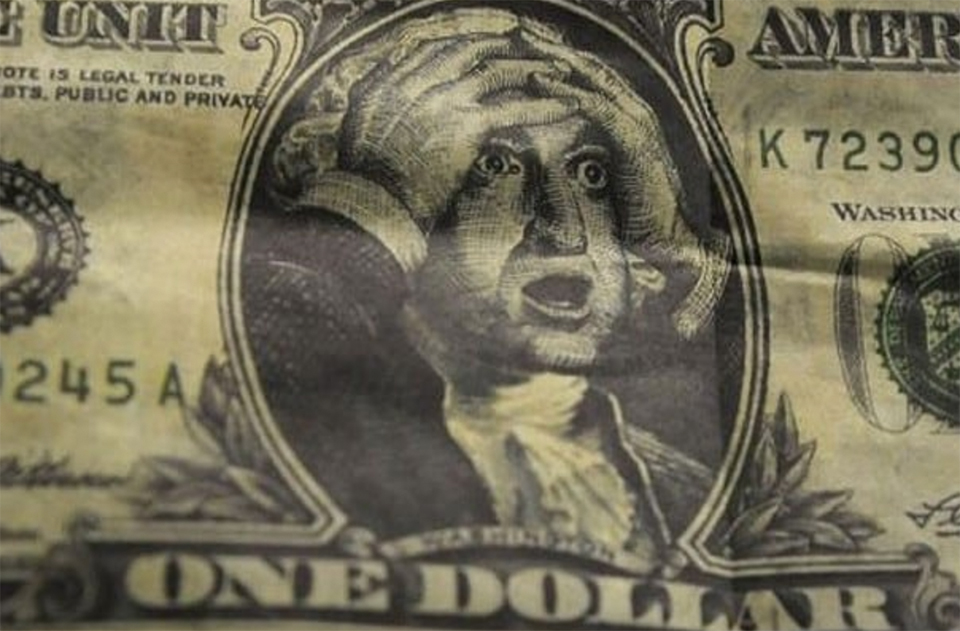
Being wealthy does not consist merely of owning vast amounts of either “stuff” or of units of value that others feel great desire, or even “FOMO”, for. Holding ten thousand tickets to the most popular concert in the world does not constitute wealth. Why is that the case, if these tickets are so desirable and, therefore, are in high demand? Simply because wealth is based on future desirability and future demand too, not only on today’s. As a matter of fact, in this simple example, even if receiving these tickets as a gift, who wouldn’t go crazy trying to dump them today immediately? Who wouldn’t want to move as quickly as possible to another asset different that these tickets, some type of reserve of value that could preserve the present degree of desirability?
Caring about the value is critically more important than caring about the asset evidently. The asset where one stores value is like the ground where one builds the house of one’s dreams. One will want the most solid ground, because one wants to live in this house for many decades. Money is the ground upon which we build our systems of value. We need money to be reliable in order to be sure about our future as local and global communities. Traditionally, the US dollar (USD) has been used for more than paying for goods and services. It is the almighty currency for international trade. This automatically turns USD into one dominant determinant of life and a store of value. The world, however, seems to be worried in these days, because the USD may not be ready to survive after the end of the concert.
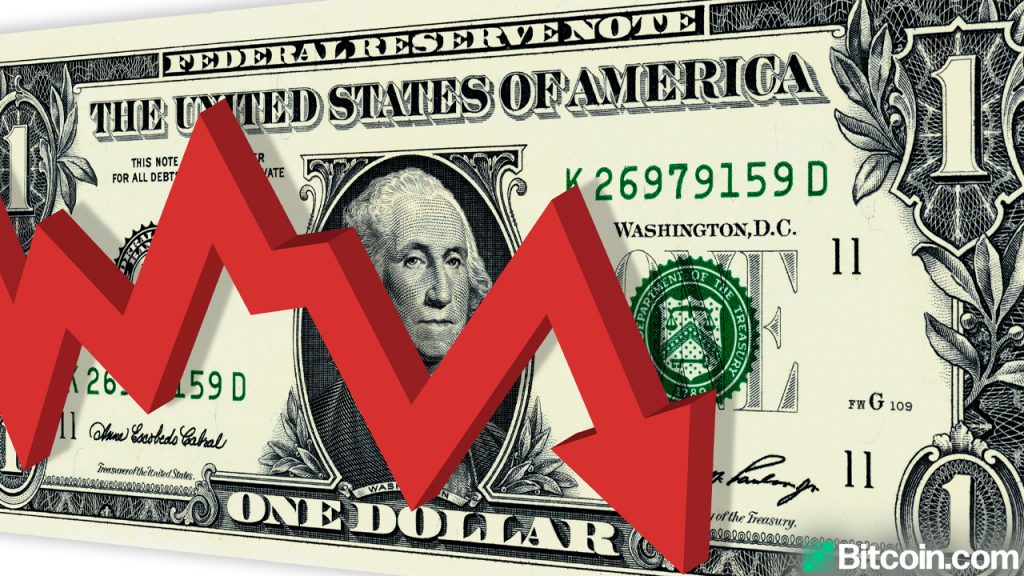
WHY THE CONCEPT “STORE OF VALUE” IS CRUCIAL FOR OUR WELFARE
The concept of “store of value “refers to one of the basic functions of money, according to modern monetary theories. Milton Friedman (1976 Nobel Memorial Prize in Economics), proposed the system of “Monetarism” where money’s value must be protected. In this view, money is more than “units of account”, “medium of exchange” or “debt valuation unit”: it depends on keeping its “store of value” function to be healthy and useful. In other words, if money does not keep its purchasing power – value – in the long term, then it is not healthy or useful and, therefore, it will not survive after the concert. The money we use today must serve as a way to store one’s capacity to acquire goods and services for long terms. If not, some other type of stores of value would replace it, like bonds, rare stones, livestock, precious metals like gold, silver or platinum, real estate, or new revolutionary currencies.

Milton Friedman
A pseudo-inherent capacity to retain value for long periods – decades or centuries – is a critical function of any monetary system. This function is essential for all citizens of any society since all of us depend on this function to be sure that, even if we don’t use some savings for many years, in the future, whenever we need to use it, it will still keep its value. If an asset tends to lose value, it no longer serves as insurance for the future. Countries whose currencies have lost a lot of value during the last years are presented as terribly negative examples of what we all need to avoid. In Venezuela, some people hurry to spend their salary on the same day they receive it, or else, the next day it will be less valuable. Who would want to save money for one’s kids future education, if it is clear that this money is in the process of severe devaluation?
WILL THE DOLLAR BE REPLACED AS GLOBAL STORE OF VALUE?
USD is not like gold or diamonds, in the sense that these natural minerals posses intrinsic physical properties that would probably not decay during the remaining years of our planet’s life span. The elevated levels of desirability people keep feeling against these properties are even interpreted as “intrinsic value” by some economic scientists and thinkers. Indeed, humans have always appreciated these assets and expressed intense urgency to have them, almost independently of culture.
The USD is one of many fiat currencies. Fiat currencies, as opposed to gold or diamonds, do not have any intrinsic property that makes their value stable over time. During the last two millennia, hundreds and hundreds of fiat monetary systems have existed and soon died for similar reasons, like the abuse committed by issuers leading to hyperinflation: from ancient Greece and the Roman Empire to modern Germany. In the 21st century, the USD is the monetary standard that might be about to implode and handle its leading position over to a new asset. One only has to see how USD printing is being done nowadays. More and more trillions created nearly at a weekly basis, like never before.
QUANTITATIVE EASING AND THE DOLLAR
Even if we decide to turn blind at the insane levels of money printing during the 2020 pandemic crisis, it is crystal clear that the process of the weakening of the USD has not stopped for decades. Every year one can see how the purchasing power of 1 USD decreases exponentially. We see frequently headlines like “A Weak Dollar Could Help the US” (New York Times, August 6th, 2019), just to pick one of the thousands. According to some, the weakening of the USD even sounds like a good thing. The weakening of the US dollar implies that, everyday, we can exchange the USD for less goods and services. It does not sound like a good idea to hold dollars for many years. Who would want to hold a terribly depreciating asset?
One more reason to feel implacably bearish on USD is the fact that, at present, USD is triggering a second self-destruction button: central banks keep materializing the new hallucination of negative interests for the elites. The Federal Reserve creates new dollars at the highest speed ever. It is often said that in the last ten years, the FED has issued more than $2 or $3 trillion. And, of course, only in 2020, this might turn into $10 trillion or more. Money machines work overtime. Thanks to the system called “Quantitative Easing”, the FED has the license to print trillions of dollars literally at will. As the viral meme says, “Money printer go brrrr!”.
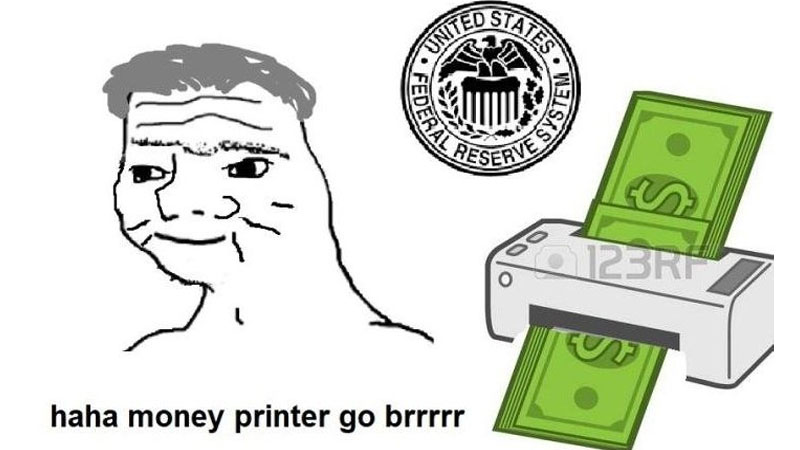
WILL THERE BE A NEW ASSET SERVING AS STORE OF VALUE?
This FED creates the problem of having tons of new money that, after release, will desperately infiltrate in each space in the market, especially this year that the pandemic has created a demand for cash. The solution is to give this money to big banks without interest or even with negative interest. Big bankers can use it before it devalues. Yes, nowadays, the FED pays to banks – only to the FED’s big friends – for taking loans. This is lucrative for the big banks that are plugged directly to the FED, the ones that profit by acquiring these loans. This money represents an insane amount of liquidity entering the market every minute. A lot of new money – unstoppable inflation – means, again, that your money is less valuable every minute.
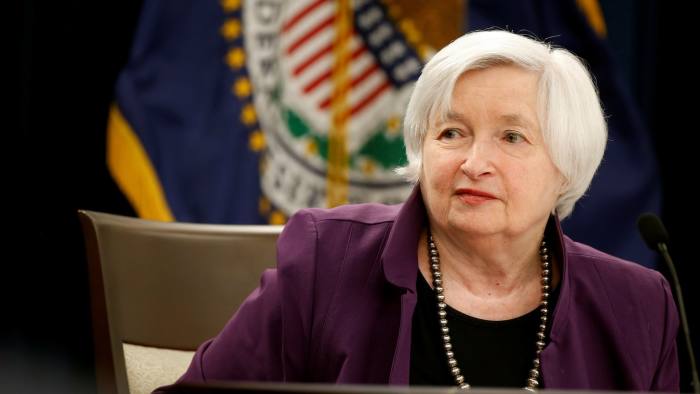
Janet Yellen
There are several assets candidates that have made promises to the global community. But, historically speaking, we have not known which one is better. Even considering the problem of choosing among candidates can cause you a headache. However, if you are part of the working class and plan to accumulate value for your future, you wouldn’t want to afford to ignore this subject. You wouldn’t want to just stay passive and bet on your fiat dollars. Not even a central banker in charge of printing money does. In 2015, Janet Yellen, the President of the Federal Reserve of the United States, declared publicly that the USD is not a good reserve of value. In her own words: “Cash is not a very convenient store of value”. We are already warned!
FACTORS THAT COMPLICATE THE SELECTION OF A NEW SYSTEM FOR STORING VALUE
Many economists, financial analysts, fintech experts, and, of course, the modern cryptocurrency investors, seem to agree. The USD is losing its hegemony little by little. There is no remedy! The US dollar could cease to be the world’s store of value system. Nonetheless, the majority of these specialists cannot agree about which would be the best next asset that can serve as a store of value. There is not a global consensus yet. How should a new system look like if we need this new system to keep all the right attributes of the old one, while also solving its issues?

Some options include letting governments establish a new international currency, returning to the use of some precious metals, or even a state-run electronic system built on top of blockchain technology. Having to select among options is not exactly the most complicated part. The real problem is to understand the factors that affect decision making. People who are thinking about this issue suffer when evaluating aspects like” who will have control of this new system?” Modern humans are less obedient and seem to consider that it is not positive or even fair that one single centralized government can keep full control and benefit.
Other problems are how to manage the minting and delivering of the new assets to the many communities of the planet, or, in other words, how to distribute units of the asset with Justice in mind without producing much greater social inequality than it already exists. How can we get different societies and communities to adopt the new system? What will happen to organizations and individuals that depend on the current system of fiat money? How can we audit and be sure of the transparency of the new system? The number of questions is infinite.
WHICH ASSET COULD BECOME THE NEW STORE OF VALUE
We have a plethora of candidates. These include a potentially re-designed US dollar, gold, some official cryptocurrency-like unit issued by a legal state of government, a cryptocurrency issued by a private organization or a truly decentralized cryptocurrency like Bitcoin or Ethereum. Each one of these assets offers considerable advantages and brings about troublesome challenges. Also, each social group, community or individual evaluates these advantages and challenges very differently.
For example, the precious metal gold is characterized by having passed the hard test of history. It could be the oldest way to store value. It seems immortal. It is also almost universal. A majority of people acknowledge its importance. The news warns us, lately, of how powerful countries are accumulating gold, like China and Russia.
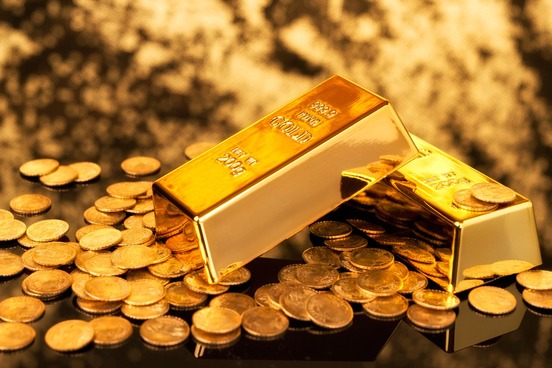
Nevertheless, gold has the problem that people just can’t carry it – a physical limitation – due to security, to its mass, and its weight. Useful money requires to be highly transportable, though. One of gold’s most criticized issues is that it cannot be fully audited. We can know only very rough approximations of how much gold each country or each holder has. A lot of gold exists only in paper.
An option that is being considered recently is that of public or private stable virtual currencies. These can be implemented on top of a Blockchain or on some secure type of electronic ledger. In the case of the public option, a government or a coalition of governments can agree and issue a new digital currency based on an official Blockchain. In the case of the private option, there are already examples in the process of consideration such as USD-Tether or even Facebook’s Libra tokens.
ADVANTAGES OF STABLECOINS
These so-called “stablecoins” have the advantage that they resemble the traditional system. Old banks may be able to adopt these without much struggle. However, they also have the same weaknesses of traditional fiat money: the top administrators of regular banking systems – the authorities in charge of the Federal Reserve, in the case of USD – can issue as much currency as they wish at any time. They can print money out of thin air literally. Fiat systems, like USD, are inflationary systems that repeat the history of creating more and more units of the currency until they have overloaded the market creating massive excess of supply. Private stablecoins can effortlessly follow the same path.
Another option that generates high expectations in modern investors interested in open finance and decentralized Blockchain-based assets are, of course, cryptocurrencies. Millions of cryptocurrency users believe that crypto is, as The Simpsons predicted, “the cash of the future” (Season 31, Episode 13). In crypto, we believe in this premise perhaps happily too much, to some extend because the other options seem too poor, if not completely obsolete, in comparison.
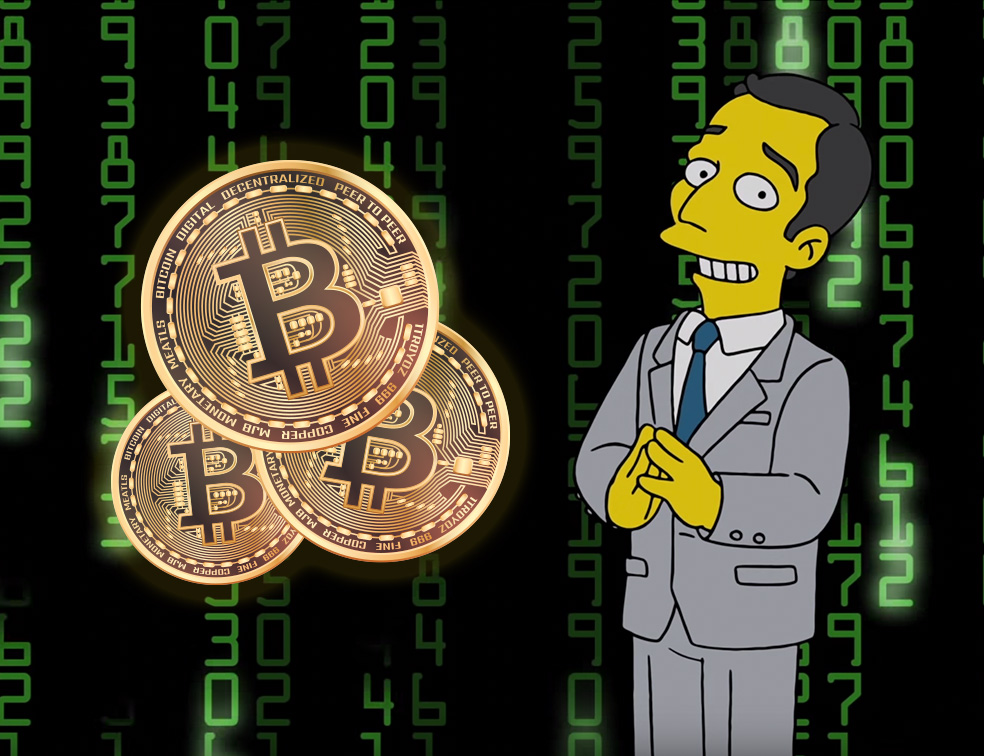
The Simpsons’ Crypto Episode
Crypto seems to cover all the factors we’ve considered before and a lot more. So far, it is undeniable that Bitcoin has been the absolute favorite candidate for the next global store of value. It has an excellent – though expensive – trustless security system based on Math and unhackable computational algorithms. Its adoption rate is remarkable too. One must mention, of course, the challenges this technology still faces. Bitcoin’s technology does not advance quickly enough, and it is not yet solving many sorts of social needs, apart from the store-of-value use case in which it shines.
COULD AN ALTCOIN OVERTAKE BITCOIN?
It may sound a bit too far-fetched even to imagine one new cryptocurrency fulfilling the store of value role other than Bitcoin. Despite this, the probability of having more cryptocurrencies used for store of value is not zero. Economy is based on human behavior, emotions, and cognition; therefore, the future will never be 100% predictable. An altcoin might also overtake Bitcoin’s absolute position as the crypto candidate for king of the global value reserve system. Today, nevertheless, Bitcoin’s acceptance and adoption throughout the world grow exponentially year by year.
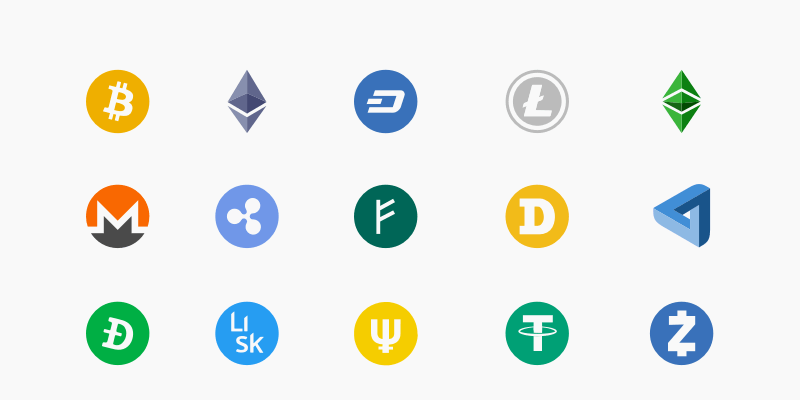
As competitors for Bitcoin, hundreds of options arise. Highly decentralized options as Ethereum, Cardano or Tezos, among many, come to one’s mind. Some minorities, as well, say “why not a sort of centralized option as XRP, BNB or a private option?” An immediate advantage they see in some of these platforms is that these have natively fixed some of Bitcoin’s chronic issues, like speed, expensive transaction fees and difficulty to build on top of it. These altcoins, in general, have the disadvantage that none is as secure as Bitcoin is, and none is revered as Bitcoin is – lack of brand loyalty.
NATURAL SELECTION: ADAPT OR DIE
Even is one shares the new global belief in Bitcoin as the next historical iteration of money technology or if one prefers a different cryptocurrency, or gold, or some other new fancy unit of value, one fact is clear: we need to be thinking about our own future now. Societies can’t afford to bet our entire future on inflationary assets controlled by politicians and bankers.
We cannot keep building houses on the sand. Rarely does human history give us some tangible chance to wake up, open our eyes, study the situation and finally make decisions. Being able to choose and to cause change does not occur every 10 or 20 years. We are at a historical moment when there is a reasonable high degree of probability that the USD we have saved in our bank, within 1, 3 or 5 years, will no longer have half or a quarter of its value. Countries are rejecting the USD and the US is overprinting trillions of it. Starting to reflect in depth about what we urgently need to do about this, seems indispensable if we do not want to lose a substantial part of the value we produce day by day. Each one of us must endeavor do our own research (DYOR) diligently in order to protect our savings and the welfare of our families.




